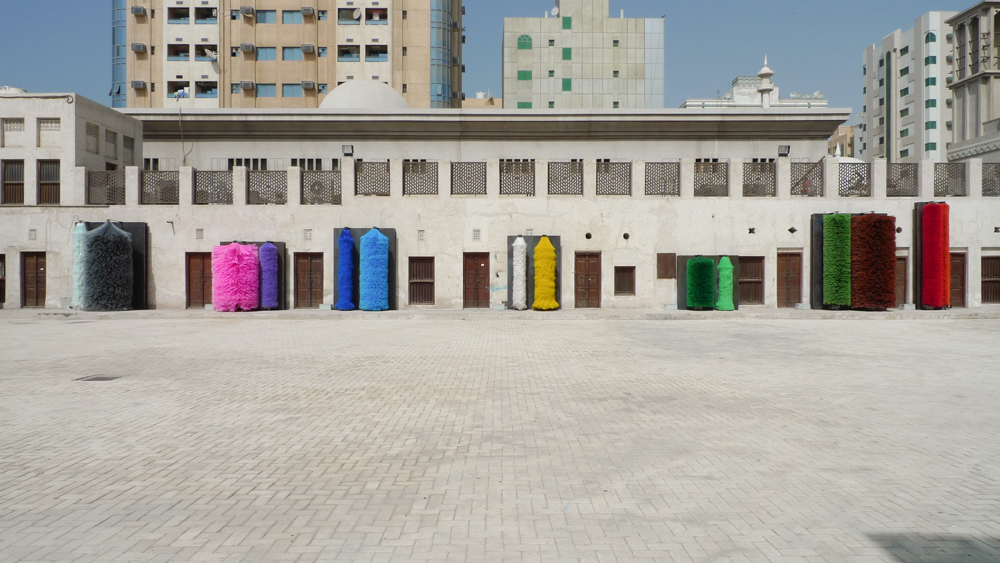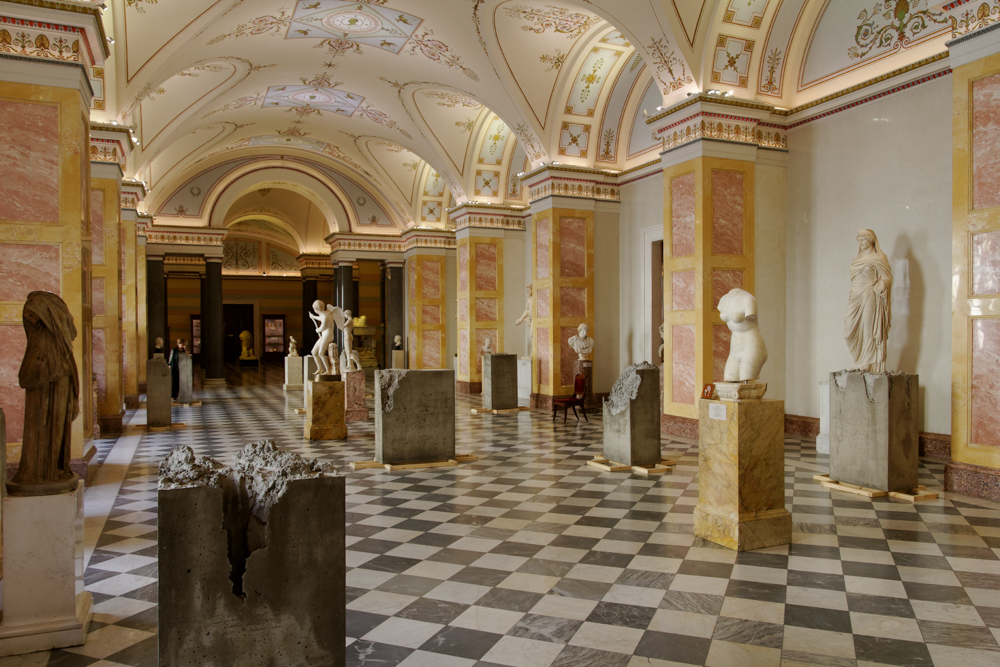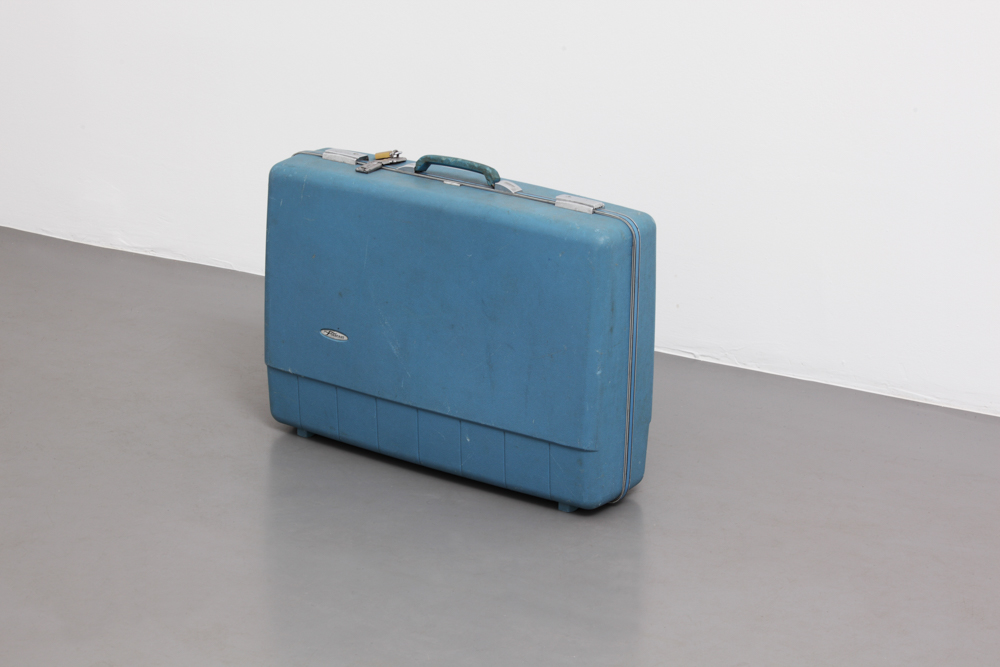Art Lost and Found
Lara Favaretto Installations Herald New Era for MCASB

This new exhibition from the Museum of Contemporary Art, simply titled Lara Favaretto, can be found in the organization’s gallery at Paseo Nuevo and in other locations, including the Glass Box at UCSB’s Art, Design & Architecture Museum, a storefront on the 900 block of State Street, and, eventually, in a vacant lot in the heart of the Funk Zone. Favaretto’s work belongs to the “expanded field of sculpture,” a term coined by art historian Rosalind Krauss in 1979 to identify the multiplicity of opportunities for making art opened by the logic of postmodernism. No longer confined to creating or finding objects for independent display, artists such as Robert Morris and Christo began marking and constructing sites and building and installing what Krauss called “axiomatic structures,” meaning architectural forms that were at once recognizable and out of place.
It is at this practice of creating axiomatic structures on a monumental scale that Favaretto excels. The Coppie Simplici or Simple Couples on display in the MCA space are found objects — the automobile-sized rotating brushes that scrub your Prius at the car wash — paired off and affixed to the gallery walls by imposing steel plates. At irregular intervals, the giant brushes torque into motion, sending off waves of air and not a little menace. Deprived of their function in the car wash, these couples “still have each other,” a familiar axiom that in this case means that, over time, through the friction of their pointless spinning, they will wear one another out.

At 907 State Street, in a piece called “Tutti giù per terra,” or “We All Fall Down,” Favaretto has filled a storefront with one ton of multicolored confetti. Industrial fans blow the colorful circles of paper, each a little smaller than a dime, into shifting piles that resemble dunes or rolling hills. Curious passersby on State Street are wonderstruck by this unexpected intervention, although some of the wonder I overheard took the form of, “I wonder how hard it will be to clean up all that confetti?” It wasn’t until I retrieved my car from the parking structure on the Chapala side of the 900 block that I realized the full impact of “We All Fall Down”. Looking up out of the dark garage through a symmetrical opening that framed the bright-green Television Hill in a gauzy cloak of fog, I momentarily saw a fragment of Santa Barbara landscape as a heap of green-dominant confetti, executed in the same neo-pointillist palette as the storefront piece, and only slightly less evanescent.
The minimalist sculptures at UCSB, Boring and Fisting, are enormously heavy blocks of concrete that the artist has marked as they were setting with a series of gestures that then give the works their titles. Following the logic of the Process Art movement in their focus on the presence of body, on nontraditional uses of material, and on the act of formation rather than the resulting object, these monumental forms also reflect another important aspect of Favaretto’s practice: the challenges of movement and mobility.

Both “Defense d’Entrer” (“Do Not Enter”) and “Lost and Found” are in the MCASB gallery space, although soon “Do Not Enter” will move to the property in the Funk Zone that MCASB has purchased with the intention to build a permanent museum there. “Defense d’Entrer” is a simple sign saying exactly that, the purpose of which in the context of Favaretto’s oeuvre is to provoke consideration of the extreme political, psychological, and philosophical crises of boundaries so characteristic of our historical moment. Lost and Found takes this line of inquiry further by incarnating that most threatening of modern anxious objects: abandoned luggage. Favaretto fills suitcases obtained from flea markets with mystery contents, then locks them and throws away the keys. Once they have been sealed, explicit instructions stipulate that they must never again be opened by anyone. To do so would, according to Favaretto, permanently void their status as works of her art. As a result, these are tricky bags to travel with, especially across national borders. One of them sits in Paseo Nuevo right now. Is it waiting for you?



